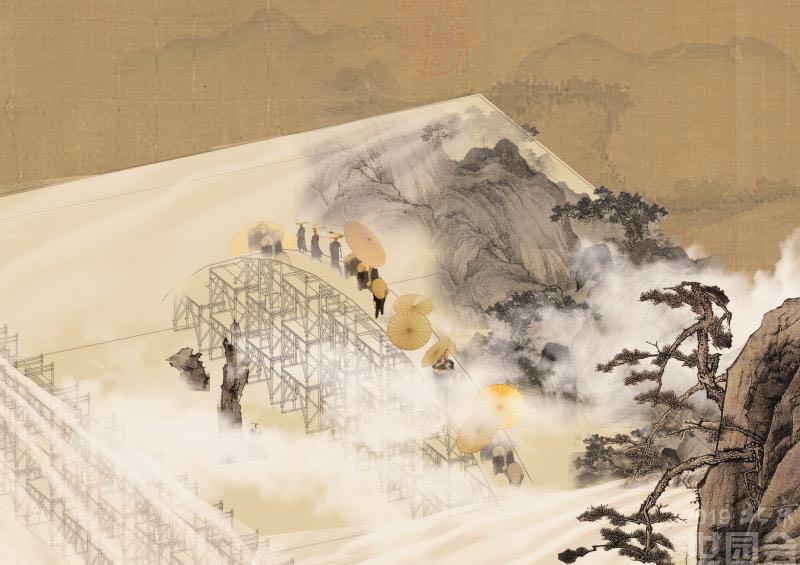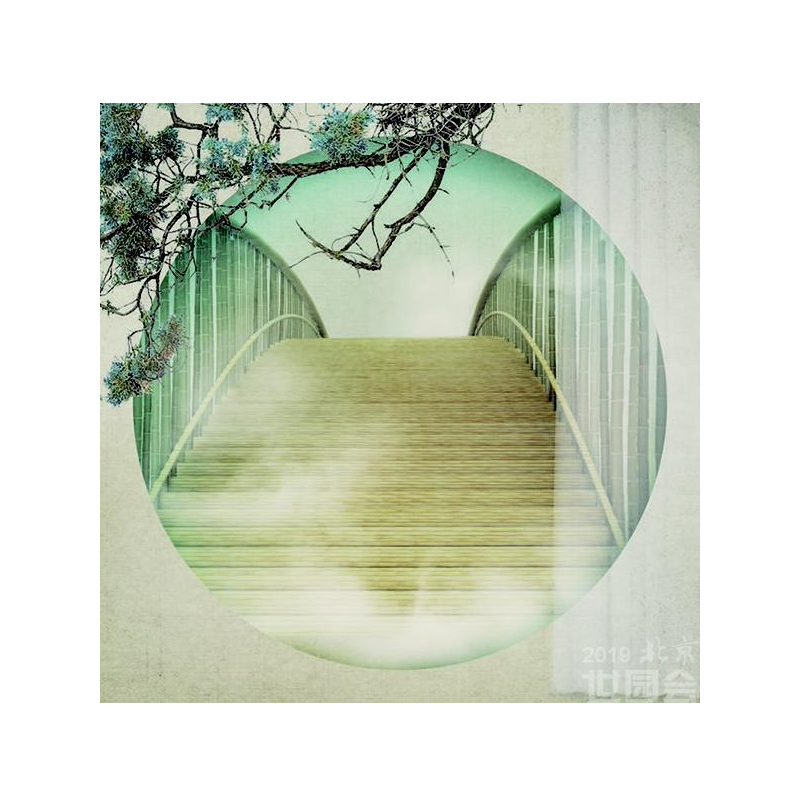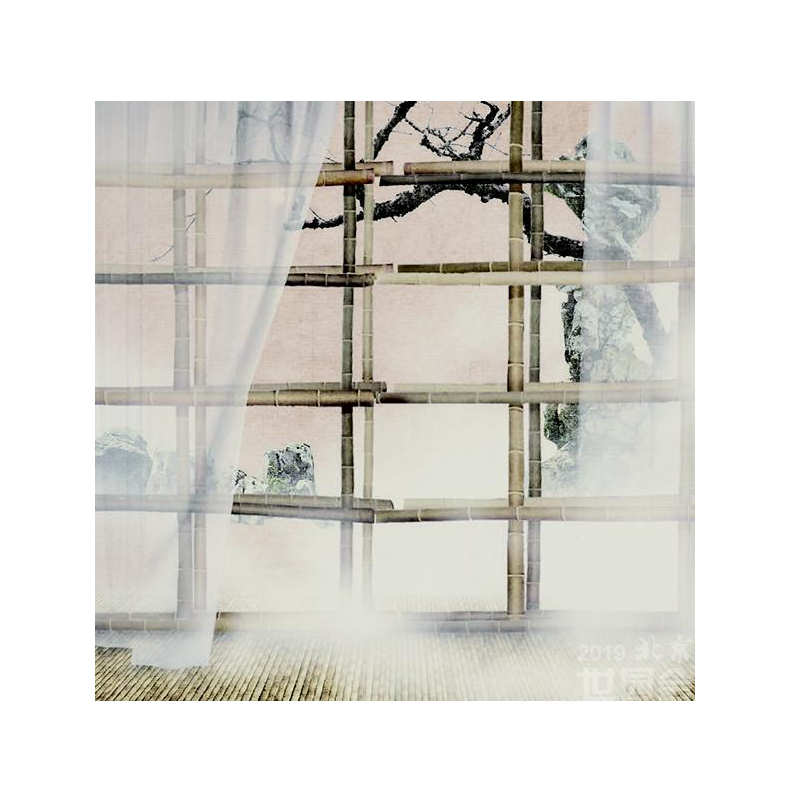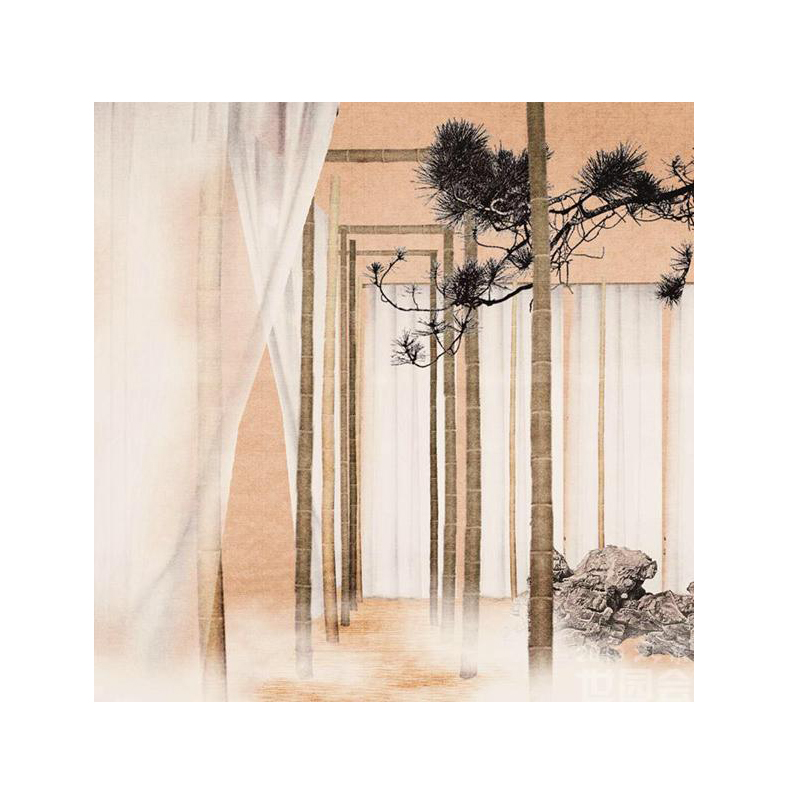In order to present a unique garden to the world at the Beijing Expo 2019, Danish designer Anderson and his team have come to China many times to draw inspirations from Chinese ink paintings, and designed “Yuan”. It is intended to interpret Chinese traditional philosophy and aesthetics, and explore the relationship between man and nature through a unique modern design language.
In designing “Yuan”, Anderson drew on the layout of foreground, medium shot and background of Chinese landscape paintings, and defined new gardens with elements such as stone, light, water, wind, wood and people. Anderson said: “Of these, pine is a symbol of eternity and immortality. Rock is the foundation, while light, water, and wind are the language of nature. Human beings shall interfere, change and organize all elements.”

The backbone trees in the garden are pines which have good aesthetic value and meaning, and are deeply rooted in Chinese culture. It is a symbol of eternity and immortality, and also represents perseverance and growth. In order to maintain the quality characteristics of Chinese gardens, different kinds of native pine trees are used in the garden. Pine trees with soil balls are placed on the rock platform to show the opposite relationship between natural aesthetics and traditional gardening.

Stone, also known as scholars’ stone or ornamental stone, has always been playing an important role in Chinese gardens and is often praised by literati. How to incorporate this aesthetic interest into modern gardens? Anderson found that natural stones commonly used in Chinese classical gardens, such as Taihu Lake stones, are scarce and expensive natural resources, and are now hard to come by. Therefore, in the new garden, he tried to use artificial stones to build new sustainable aesthetics. Concrete waste is one of the largest pollutants nowadays. From the perspective of environmental protection and resource utilization, it is of great benefit to use waste concrete as recycled concrete aggregate. Anderson plans to turn the waste into artificial stones in a shape equal to natural stones through 3D scanning and 3D printing technologies to use them in the park.

Light, wind, water are the languagesof nature. Anderson has more interesting ideas. He plans to display light in the garden in a natural and artificial way. Through mirrors and reflective foils, people can appreciate the colorful “rainbow” at an angle of refraction less than 42°. In a natural and artificial way, people can have a wonderful air sensing experience in the garden, smelling rosin, listening to the wind, and feeling the breeze. Through the water mist, the park also presents mysterious feeling, such as the white space in Chinese paintings.

“This will be a garden that breaks the visual perception and brings sensory experience. Walking into the garden, you can appreciate the rocks, smell the rosin, listen to the wind, feel the fog, climb onto the bridge, and take a leisure stroll together with the companions,” said Anderson.